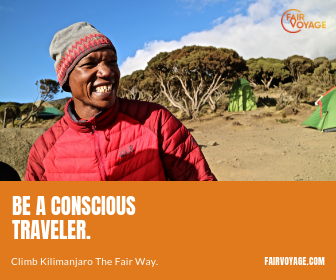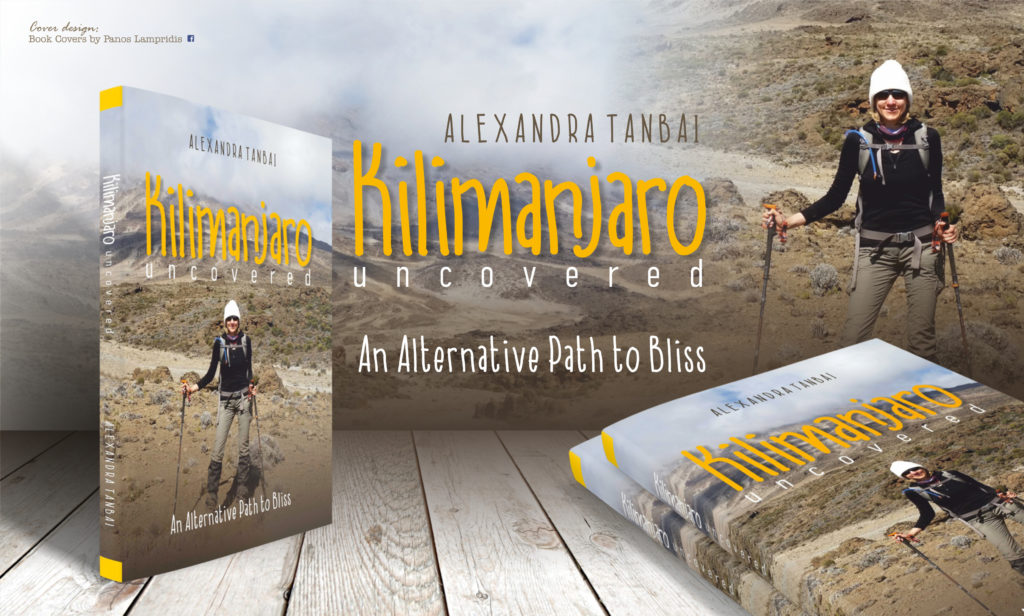The first question to get your head around when planning your own trip, and perhaps the easiest to solve, is when to go.
While theoretically hard-core hikers could go any time, practically Kilimanjaro has its seasons with vast differences in expected temperatures, sunshine, clouds, rain and snow on the summit.
Fortunately, the online community seems in agreement that the dry seasons at the beginning of the year and summer to autumn are the best times. Unfortunately, they even differ in pinning down the exact months. Is it December to February or January to March? Is is June to September or July to October? To err on the safe side, January to February and July to September seems a good choice. This is the kind of data they usually refer to:
Let me give you my take on this that might be a bit more difficult to figure out:
The beginning of the year is warmer – that’s a negative, not a positive:
January and February are warmer OFF the mountain, not ON the mountain. There are no publicly available up-to-date monthly average weather statistics from the summit, but research conducted by the UMassAmherst Climate System Research Center clearly shows that temperatures are far more stable on the summit throughout the entire year.
Off the mountain, January and February are not only warm, they are STEAMING HOT. I don’t know about you, but walking through the jungle in tropical heat during the first and last days is not my idea of fun. I rather prefer it to be pleasantly warm, not hot. Also, most people would go on safari thereafter, and sitting in a car all day in steaming heat is no fun either. So I would definitely prefer the SUMMER months because they are COOLER.
Hence, I would recommend July to September as the best time to hike Kilimanjaro. The only factor that speaks against these months are the crowds. But there is a very easy work-around for that – just go for one of the less common (but equally good) routes and you won’t have any crowds at all. At least that was the case for our group on the Northern Circuit, and we hiked during the supposedly single best week of the entire year, summiting during full moon in September.
Summit during full moon if possible:
Many operators recommend summiting during full moon and, based on my own experience, I would definitely recommend doing so, if possible. I managed to ascend and “see my way up” the entire summit night without ever turning on my headlamp. The only time I tried to turn it on to find something in my backpack, the batteries had drained and didn’t work any longer. So it’s also good not to be dependent on them. Even if you bring spare batteries, it would be a pain to change them in the freezing cold, which would require taking off your gloves. The only small negative of hiking near full moon is that – when there’s nowhere to hide behind – it also takes away privacy when you need to pull down your pants. However, that’s never been a problem for our group.
Avoid months with higher levels of cloudiness:
You might wonder why I exclude June and October, which are equally part of the dry season. The reason are their higher levels of cloudiness. At least in my mind, what’s the point of reaching the top if all we can see are clouds? Worse than that, clouds don’t only obstruct our view. They may also translate into moisture that seeps into our clothes and makes us feel cold. Brrr…
Another problem with October is that it also moves into rainy season territory. While the first half might be dry, the second half might be rainy already. Assuming most of us don’t head home straight after summiting but add on a safari and/or Zanzibar thereafter, doing so during the rain may not be very appealing. Even if you don’t mind getting wet, bear in mind the main evil of rain off the mountain are mosquitoes – transmitters of malaria and other diseases.
Why do many operators also recommend other months?
Always remember that operators are in the business of making money. So of course they have an incentive to spread out their work and keep operating throughout the year. Beware of blindly believing what they tell you. As I discovered throughout my own research when booking my hike, many operators will tell you whatever you want to hear to make you book with them. While there are many good ones as well, most of them are crooks, unfortunately. For more information on that topic, please refer to my specific post about selecting an operator. Having said that, if you want to hike a popular route and your operator recommends January/February for less crowds, then that’s a valid argument of course. Go for it!









Leave a Reply